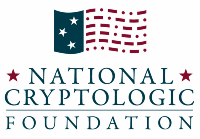The excerpt below is from an article by Erin Blakemore for History.com - updated on 3 May 2019. Click to view the entire article online and see a gallery of photos, plus get links to many other related articles.
"In February 1942, a small group of members of a top-secret military language school defied orders. They slipped out of their headquarters in San Francisco and snuck toward their destination, a nearby racetrack.
They weren’t there to gamble: They were there to visit their parents, Japanese immigrants who were about to be interned for the duration of the war. These sons of immigrants were American citizens, but because of their parents’ ancestry, they were considered enemies of the United States.
But unlike their parents, they weren’t headed for internment camps. Instead, they were training to be shipped to the Pacific Theater, where they would become one of the United States’ most powerful secret weapons.
Over the course of World War II, Nisei linguists, many of whom were initially forbidden from serving in the military and many of whom spoke little Japanese before the war, became a critical tool in the Pacific Theater. These children of Japanese immigrant (who were known as Issei) translated crucial documents and assisted with interrogations and interpretations, often during tense battles. They served their country while over 100,000 Japanese-Americans and immigrants from Japan were forced from their homes and jobs and into internment camps. But though they helped the Allies win the war, the Nisei linguists’ contributions to the war effort were kept secret until decades later....." Read more......


